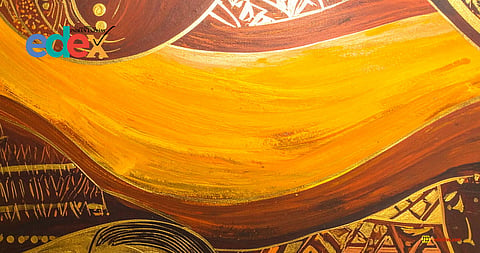

A groundbreaking genomic study led by researchers from Mangalore University, and Yenepoya (Deemed-to-be University) has identified a distinct ancestral source in the Koraga tribe that may date back to the Indus Valley Civilisation.
The findings, published in the European Journal of Human Genetics (EJHG), propose the existence of a fourth ancestral component, the ‘Proto-Dravidian’ ancestry, thereby refining the current understanding of the genetic structure of the Indian subcontinent.
Until now, genetic models of Indian ancestry have generally recognised three major ancestral sources: Iranian plateau farmer-related, Pontic-Caspian steppe pastoralist-related, and Andamanese hunter-gatherer-related.
However, the new study led by Dr M S Mustak, and Dr Ranajit Das suggests this framework may be oversimplified. Their analysis reveals evidence for a fourth genetic stream that appears to have diverged around 4,400 years ago in the region between the Iranian plateau and the Indus Valley, coinciding with the time depth of the Indus Valley Civilisation.
The study proposes that this Proto-Dravidian ancestry represents a unique lineage distinct from previously recognised sources.
According to the authors, this genetic component forms a bridge between ancient Middle Eastern populations and early inhabitants of South Asia, supporting the hypothesis of a Dravidian heartland that predated the arrival of Indo-European languages.
The research team, which includes noted linguist Prof George Van Driem of the University of Bern, demonstrates a correlation between linguistic and genetic lineages within Dravidian-speaking communities.
Linguistic ties to North Dravidian languages
The study builds on their earlier publication in ‘Frontiers in Genetics, which found that the Koraga tribe carries a maternal lineage linked to North Dravidian linguistic affinity.
Lead author Dr Jaison Sequeira designed the study’s modelling framework by comparing the linguistic and genetic affinities of Koraga, Kurukh, and Brahui populations, tribes separated by large geographical distances but connected by linguistic heritage.
Persistence across modern populations
The admixture analysis revealed that traces of Proto-Dravidian ancestry persist in most modern Indian populations, though in varying proportions, while being less pronounced among tribal groups representing the Ancient Ancestral South Indian (AASI) lineage.
Dr Ranajit Das highlighted that the Koraga population, due to endogamous practices, exhibits a high degree of haplotype sharing, suggesting a recent founder event.
Institutional support for indigenous research
Speaking to reporters, Prof P L Dharma, Vice-Chancellor of Mangalore University, emphasised the importance of interdisciplinary collaboration in advancing such research. “Mangalore University has long been committed to studying the population genetics of indigenous communities along India’s southwest coast,” he said.
